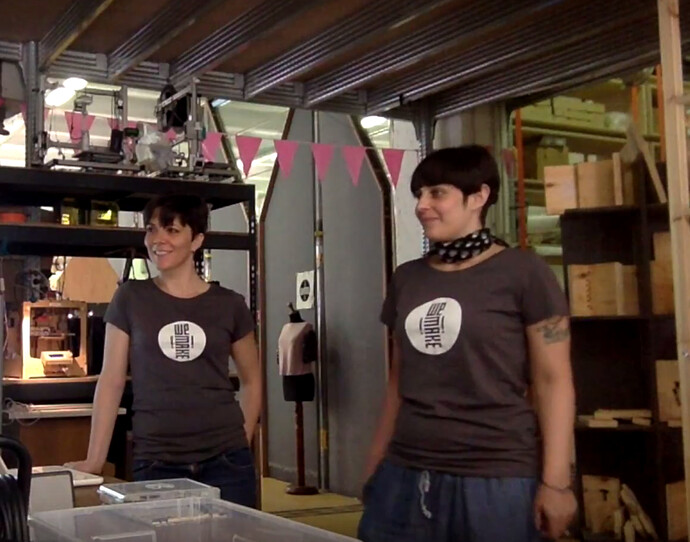“People who have allergies or sensitivities to certain food additives should check labels carefully.”
http://www.who.int/mediacentre/factsheets/food-additives/en/[text-direction=rtl]
[/text-direction]
Allergo Kì is a project developed in the frame of MIR (Maker In Residence) activity for opencare at WeMake. A team of designers came out with a project for a round display designed for restaurants to represent allergies to food and customers needs in case they are allergic to specific kind of food.
After the post called AllergoKi | Agile kick off at WeMake, on july 31st a post titled Allergo Kì | User journey experience, interviews and prototyping was published. Then a post about Allergo Kì | How to represent allergens with icons describing the study on the icons, and on august 10th a post named Allergies challenging restaurants by open design followed, deepening on some social critical aspects about the situation allergic people must face if they decide to lunch in a restaurant. What is really of concern here is the attention to this topic given by people involved or simply interested in opencare represented by a quite above average numbers of reads.
Following Allergo Kì team vision we should develop and disseminate new ways and artifacts to bypass classifications (i.e. socially defined differences) about our daily lives, bodies, disorders and habits. In the case of food allergies the usual and social representation tells about people with food allergies as exceptions of the tacit and shared rule about what should be eaten in a restaurant and how we should behave as “paying eaters”. We can eat hindi, japanese, italian, tex mex, fast food, but what about serious global issues about food instead of laypeople geography represented by the restaurants? Fast food restaurants are said to be global, but what about global issues about their food when customers ask for a lunch without onion (Star, 1990)?
Moreover, it is a real contradiction between health global issues and how restaurants shape customers when we pass from the view in the food industry to the one shared by the World Health Organization tells about something that sounds like: we have on one side the “normal” people, while on the other “those who cannot eat this or should check labels carefully”.
Food allergy is a rising global health problem and, as reported on the White Book on Allergy (WAO, 2013), it was in 2013 a problem for 240 million people up to 550 million. In Europe (Mills, et al., 2007) numbers are also impressive and count between 11 and 26 million people interested by the problem. These statistics are of course not updated and the situation might have become much critical. There is concern about GM foods (FAO, 2001). The same White Book includes in the key statements about food allergies: the issue of quality of life of sufferers (mainly children) and the need for advocacy of “stakeholders” that “must be prepared to meet the needs of patients by enhancing the diagnostic process, the traceability of responsible foods, and the availability of substitute foods, assisting hospitalized patients, and preventing mortality” (p.54). Although labelling such people as patients, the problem is tangible in the healthcare world, but less outside and in the wide social context of food industry and restaurants where it is still considered a sort of exception that may not occur in the daily work routine while is about a growing percentage of possibile customers.
Read more about Allergo Kì challenge: https://legacy.edgeryders.eu/en/allergoki
FAO 2001 “Evaluation of Allergenicity of Genetically Modified Foods” Report of a Joint FAO/WHO Expert Consultation on Allergenicity of Foods Derived from Biotechnology 22 – 25 January ftp://ftp.fao.org/docrep/fao/007/y0820e/y0820e00.pdf
Mills EN, Mackie AR, Burney P, Beyer K, Frewer L, Madsen C, Botjes E, Crevel RW, van Ree R. 2007 “The prevalence, cost and basis of food allergy across Europe”. Allergy. 62: 717-22
Star, SL 1990 “Power, Technology and the Phenomenology of Conventions: On being Allergic to Onions”, The Sociological Review, 38: 26-56
WAO 2013 White Book on Allergy, WAO White Book on Allergy | World Allergy Organization

 Ceramic is superclean now, at least in Sassuolo. The big push started in the late 60s, and was complete by the late 80s. But the boom years were a mess.
Ceramic is superclean now, at least in Sassuolo. The big push started in the late 60s, and was complete by the late 80s. But the boom years were a mess.